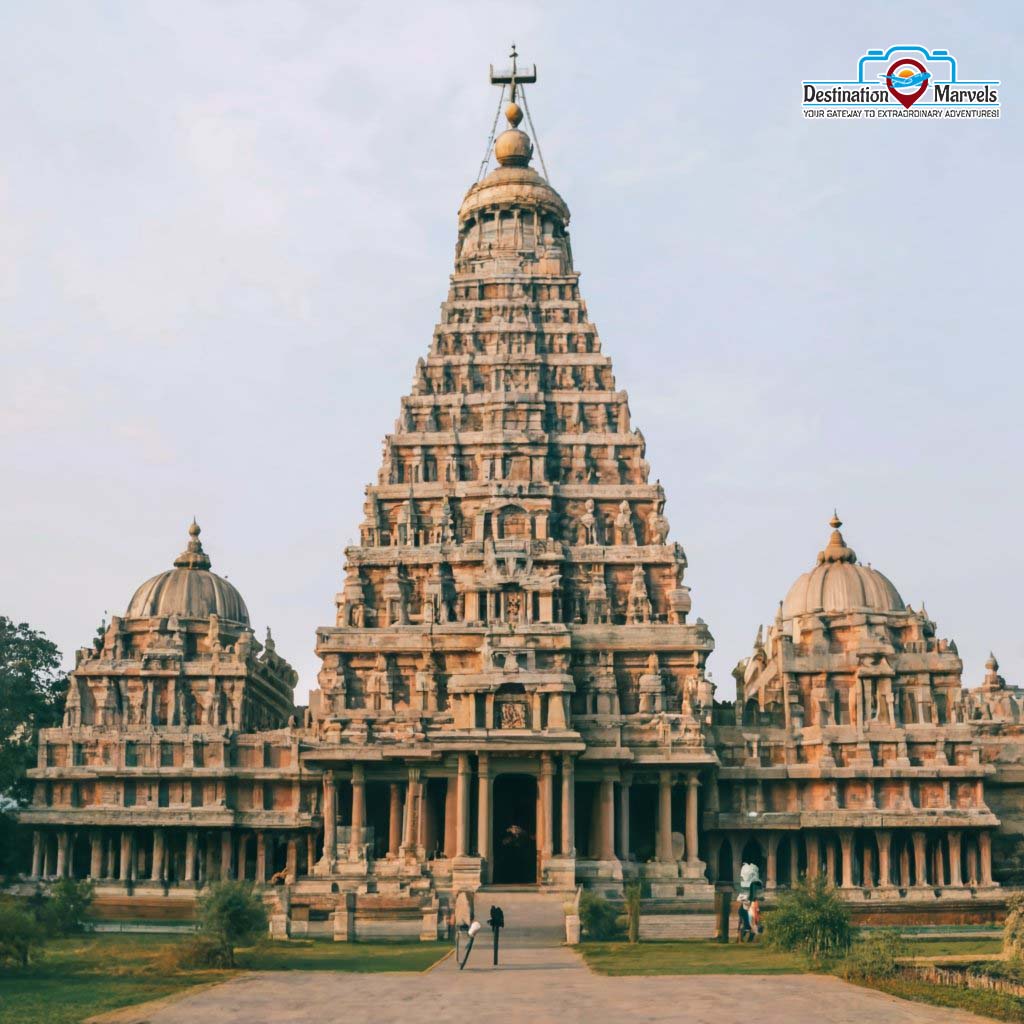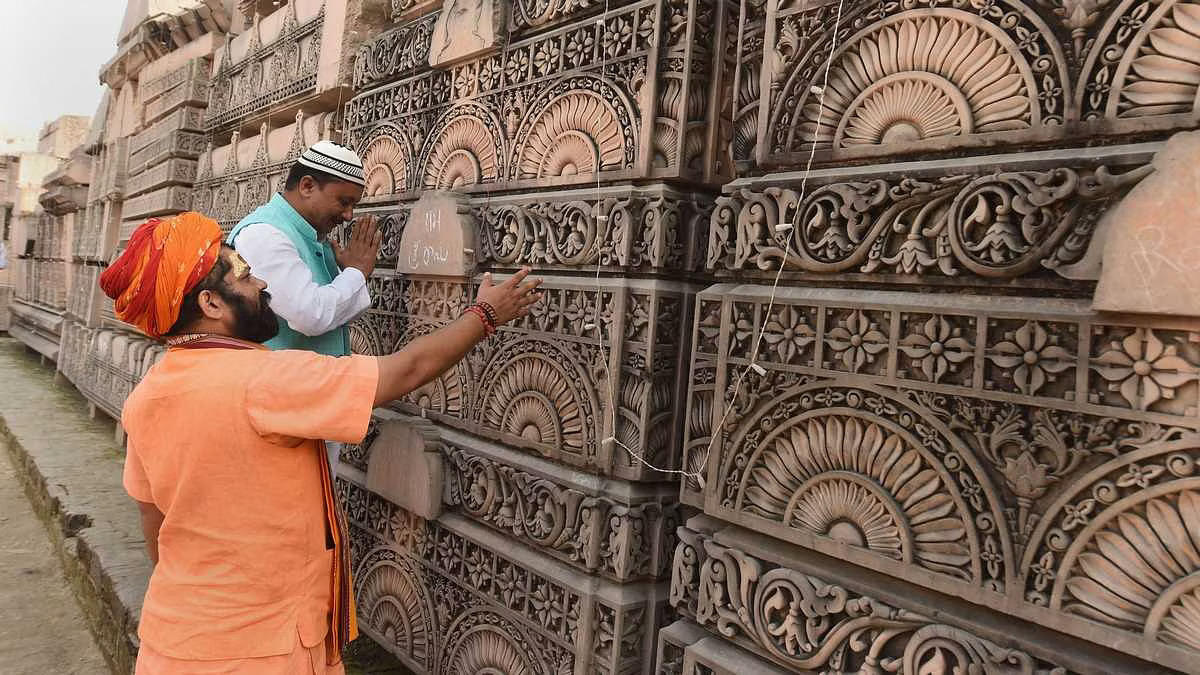On the hallowed grounds of Ayodhya, history and spirituality converge on the momentous day of 22nd January 2024. The inauguration of the Ram Mandir is not merely an event; it is a historical milestone that resonates with devotees and admirers worldwide. In this comprehensive guide, we explore the significance of this grand occasion, the events leading up to it, and the cultural vibrancy that defines Ayodhya during this period. On the auspicious day of 22nd January 2024, Ayodhya beckons devotees and travelers alike to witness a momentous occasion – the inauguration of the Ram Mandir. This sacred event marks a significant milestone in the rich tapestry of Ayodhya’s history. In this guide, we unveil the allure of Ayodhya, providing insights into the best places to visit, nearby hotels, and the serene parks that surround the Ram Mandir. The air in Ayodhya is charged with spirituality, and on the monumental day of 22nd January 2024, the inauguration of the Ram Mandir elevates this ancient city to new heights of significance. In this extensive guide, we invite you to delve into the heart of Ayodhya, uncovering its spiritual treasures and exploring the best places that surround the Ram Mandir.
Explore the Sacred: Visit Ayodhya Ram Mandir on 22 Jan 2024
Ayodhya, known as the birthplace of Lord Rama, holds a special place in the hearts of millions. The newly constructed Ram Mandir stands as a testament to the devotion and cultural richness of the region. Visiting Ayodhya on this historic day offers a unique opportunity to partake in the spiritual fervor and witness the grandeur of the temple. Ayodhya, often referred to as the birthplace of Lord Rama, is a city that resonates with history, mythology, and devotion. As devotees and travelers converge on this sacred land, the unveiling of the Ram Mandir adds a new chapter to Ayodhya’s rich tapestry.

Best Places to Explore Around Ayodhya
1. Hanuman Garhi Temple:
Dedicated to Lord Hanuman, this temple is a short distance from the Ram Mandir. The panoramic view from the temple offers a breathtaking perspective of Ayodhya, making it a must-visit for spiritual seekers and photography enthusiasts alike. Perched atop a hillock, Hanuman Garhi Temple is a beacon of spirituality in Ayodhya. Dedicated to Lord Hanuman, the temple offers not only a spiritual haven but also panoramic views of the city. Devotees and tourists alike ascend the 76 steps to seek the blessings of the mighty Lord Hanuman.
2. Kanak Bhawan:
This ancient temple is renowned for housing the idols of Lord Rama and Goddess Sita adorned in gold. The intricate architecture and vibrant surroundings make Kanak Bhawan a spiritual haven for devotees. This ancient temple, also known as Sone-ka-Ghar, houses the divine idols of Lord Rama and Goddess Sita adorned in gold. The temple’s historical significance and intricate architecture make it a must-visit destination. Devotees believe that visiting Kanak Bhawan brings prosperity and happiness.
3. Sita Ki Rasoi:
A pilgrimage to Ayodhya is incomplete without visiting Sita Ki Rasoi, believed to be the kitchen of Goddess Sita. The architectural marvel and the spiritual significance make it a captivating spot for tourists. A short walk from Kanak Bhawan, Sita Ki Rasoi is believed to be the kitchen of Goddess Sita. The site holds immense cultural and religious importance, with intricate carvings depicting the life of Lord Rama and Sita. Pilgrims often include this spot in their spiritual journey through Ayodhya.
4. Ram Janmabhoomi:
The epicenter of Ayodhya’s spiritual landscape, Ram Janmabhoomi is the sacred spot believed to be the birthplace of Lord Rama. The inauguration of the Ram Mandir on 22nd January 2024 adds a monumental chapter to the history of this revered site. Devotees gather to witness and partake in the divine energy that surrounds the temple.
5. Treta Ke Thakur:
Dedicated to Lord Rama, Treta Ke Thakur is a temple with ancient origins. It is believed that the temple stands on the spot where Lord Rama performed the Ashwamedha Yajna. The serene ambiance and historical significance make it a place for contemplation and prayer.
6. Nageshwarnath Temple:
A temple dedicated to Lord Shiva, Nageshwarnath is considered one of the oldest temples in Ayodhya. The Shivalinga here is believed to have been established by Lord Rama himself. The temple’s architecture and spiritual resonance draw devotees seeking blessings from Lord Shiva.

7. Swarg Dwar:
Translated as the ‘Gateway to Heaven,’ Swarg Dwar is a revered site where it is believed that Lord Rama left for his heavenly abode. Pilgrims visit this spot to pay homage and experience the divine aura associated with the departure of Lord Rama.
8. Bharat Mandir:
Constructed by Acharya Kishore Kunal, Bharat Mandir is dedicated to Lord Rama’s younger brother, Bharat. The temple showcases a magnificent idol of Lord Bharat and is a testament to the brotherly bond depicted in the epic Ramayana.
9. Mani Parbat and Sugriv Parbat:
These twin hillocks are named after Lord Rama’s monkey allies, Hanuman and Sugriv. Devotees climb the stairs to reach the top, where a temple dedicated to Lord Rama and Goddess Sita stands. The panoramic views of Ayodhya from the hilltop are mesmerizing.
10. Guptar Ghat:
Situated on the banks of the Sarayu River, Guptar Ghat is associated with the cave where Lord Rama is believed to have taken Jal Samadhi. Pilgrims take a holy dip in the river here, seeking spiritual purification.
Accommodations: Hotels and Rooms for a Comfortable Stay
After a day of spiritual exploration, finding the right accommodation is crucial for a restful stay in Ayodhya. Ayodhya offers a range of accommodations catering to different preferences and budgets. For a memorable stay, consider the following options:
1. Ramada Plaza by Wyndham Ayodhya:
A luxurious choice that seamlessly blends modern amenities with the spiritual ambiance of Ayodhya. With spacious rooms and top-notch services, it offers a haven of comfort.
2. Hotel Priya:
A budget-friendly option situated close to the Ram Mandir, Hotel Priya provides a convenient stay without compromising on quality. The proximity to major temples makes it an ideal choice for pilgrims.
3. Ganga Hotel:
Nestled by the serene river Ganges, Ganga Hotel offers a tranquil atmosphere. The hotel’s proximity to major attractions makes it a strategic choice for those seeking a peaceful stay.
4. Moksh Motel:
For travelers looking for a unique experience, Moksh Motel offers riverside cottages with traditional decor. The picturesque surroundings add a touch of serenity to your stay.
5. Vanvasi Resort:
Surrounded by lush greenery, Vanvasi Resort provides a nature-centric experience. The resort’s eco-friendly approach and comfortable accommodations make it an ideal choice for nature lovers.
Parks: Serenity Amidst Nature
Ayodhya not only captivates with its spiritual sites but also offers serene parks for those seeking a peaceful retreat. After a day of spiritual exploration, unwind in the serene parks that Ayodhya has to offer:
1. Ayodhya Ki Paidi:
A riverside park along the banks of the Sarayu River, Ayodhya Ki Paidi provides a picturesque setting for leisurely strolls and moments of quiet contemplation. The view of the river and surrounding temples adds to the tranquility.
2. Ram Ki Paidi:
Situated along the steps leading to the river, Ram Ki Paidi offers a well-maintained park where visitors can unwind amidst greenery. The ambiance is perfect for those seeking a peaceful escape.
3. Naya Ghat Park:
An upcoming park with modern amenities, Naya Ghat Park is ideal for families looking to spend quality time amidst nature. The well-planned landscaping and play areas make it a delightful spot for both locals and tourists.
The inauguration of the Ram Mandir on 22nd January 2024 stands as a testament to Ayodhya’s eternal glory. The events leading up to the grand day, the cultural celebrations, and the spiritual resonance create a tapestry of devotion and celebration. As Ayodhya continues to bask in the afterglow of this historic event, visitors are invited to immerse themselves in the city’s rich heritage and witness the eternal glory of Lord Rama’s abode.
The Grand Inauguration: Unveiling the Ram Mandir
1. Foundation Laying Ceremony:
The journey to the inauguration began with the foundation laying ceremony, a solemn event that marked the beginning of the construction of the Ram Mandir. Devotees and dignitaries gathered to witness the symbolic laying of the first stone, setting the stage for the grand structure that would soon grace Ayodhya’s skyline.
2. Bhumi Pujan:
A sacred ritual, the Bhumi Pujan or land worship ceremony, was a pivotal event in the prelude to the inauguration. Conducted with religious fervor, the ceremony involved prayers, rituals, and offerings to seek the blessings of the divine for the successful construction of the temple.
3. Construction Progress:
In the months leading up to the inauguration, Ayodhya witnessed a flurry of construction activity. Skilled artisans, architects, and laborers worked tirelessly to bring to life the vision of the temple. The rising spires and intricate carvings began to shape a structure that would soon become a symbol of devotion.
Events Leading Up to the Inauguration
4. Religious Discourses:
Ayodhya, steeped in spirituality, hosted a series of religious discourses and talks by eminent scholars. These sessions aimed to enlighten devotees about the historical significance of the Ram Mandir and the values it represents. Scholars and spiritual leaders shared insights into the teachings of Lord Rama.
5. Cultural Performances:
To celebrate the cultural diversity of Ayodhya, the city organized a series of cultural performances. Dance, music, and theatrical presentations highlighted the rich heritage of the region, creating an atmosphere of joy and festivity.
6. Heritage Walks:
Heritage walks were organized to acquaint visitors with Ayodhya’s historical landmarks. Tourists and pilgrims explored the city’s ancient temples, ghats, and significant sites, gaining a deeper understanding of Ayodhya’s cultural and religious heritage.
7. Spiritual Retreats:
As a prelude to the grand event, spiritual retreats were conducted to provide seekers with an immersive experience. Meditation sessions, yoga retreats, and spiritual discourses allowed participants to connect with their inner selves amidst Ayodhya’s serene ambiance.
The Inauguration Day: A Day of Devotion
8. Early Morning Aarti:
The day of the inauguration began with a soul-stirring early morning aarti. Devotees thronged to the Ram Mandir, offering prayers and participating in the collective expression of devotion. The resonating chants and the fragrance of incense filled the air with spirituality.
9. Procession of Deities:
A procession of deities from various temples around Ayodhya added a divine touch to the festivities. Idols of Lord Rama, Goddess Sita, and other revered deities were carried in a grand procession, accompanied by traditional music and fervent devotees.
10. Inaugural Ceremony:
The highlight of the day was the inaugural ceremony itself. Dignitaries, religious leaders, and thousands of devotees gathered to witness the historic moment. The consecration rituals, Vedic chants, and the unveiling of the deity marked the formal opening of the Ram Mandir.
Post-Inauguration Celebrations
11. Prasad Distribution:
Following the inauguration, prasad distribution became a communal affair. Devotees received blessed offerings, emphasizing the spirit of sharing and communal harmony that the Ram Mandir embodies.
12. Cultural Extravaganza:
The celebrations extended into a cultural extravaganza, with performances by renowned artists and cultural troupes. Music, dance, and drama added a festive flair to Ayodhya’s streets, creating an atmosphere of jubilation.
13. Global Participation:
The event garnered global attention, with live broadcasts and coverage reaching audiences around the world. The global participation showcased Ayodhya’s cultural richness and the universal appeal of Lord Rama’s teachings.
Planning Your Visit: Practical Tips
14. Accommodations:
Given the heightened interest during this period, it is advisable to book accommodations well in advance. Explore a range of options, from luxurious hotels to budget-friendly guesthouses, to ensure a comfortable stay.
15. Transportation:
Plan your transportation to Ayodhya in advance. The city is well-connected by road and rail, and special arrangements may be in place during significant events. Consider local transportation options for exploring Ayodhya’s attractions.
16. Security Measures:
As large gatherings are expected, be mindful of security measures. Follow local guidelines, cooperate with authorities, and prioritize your safety during the events.
